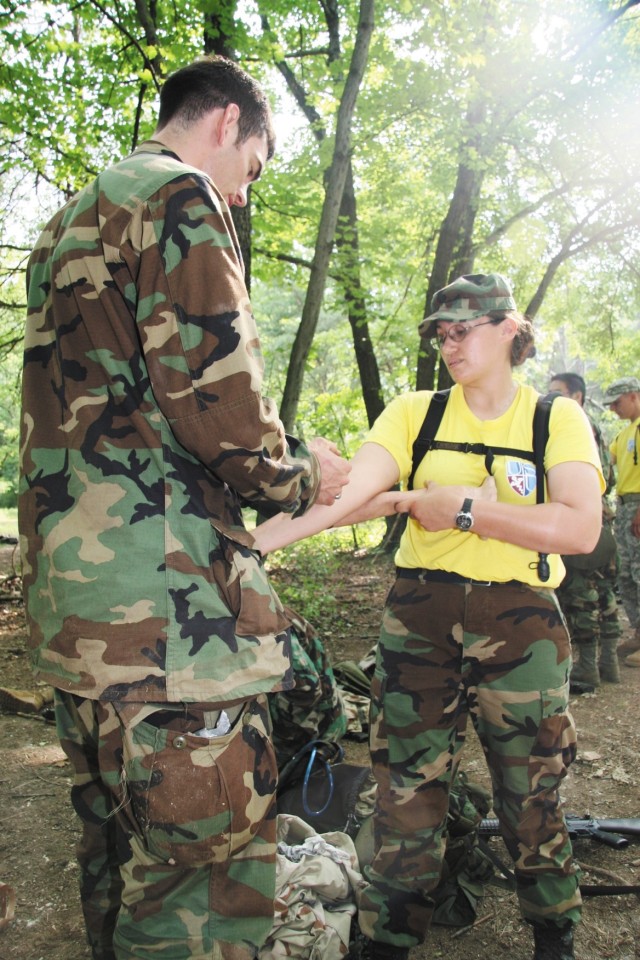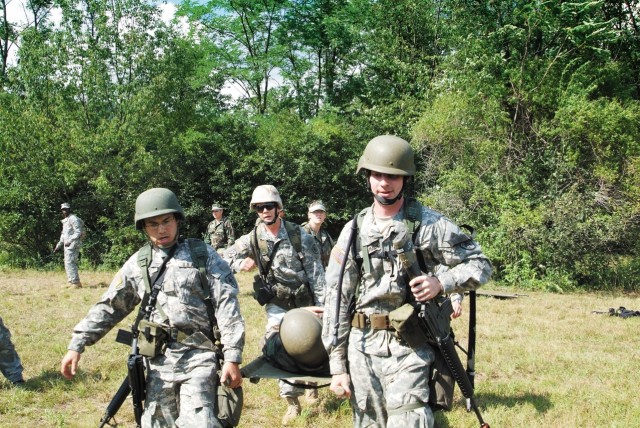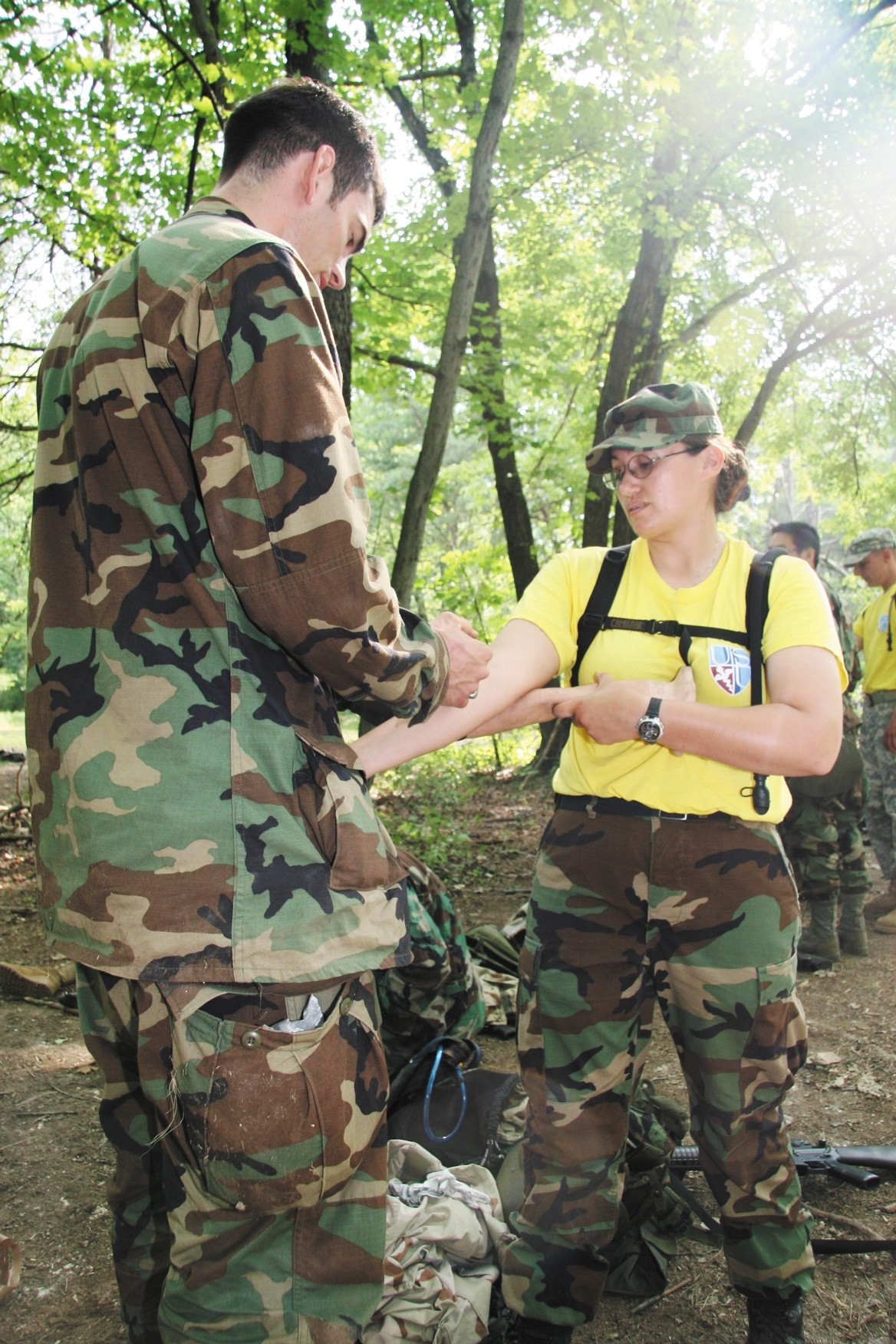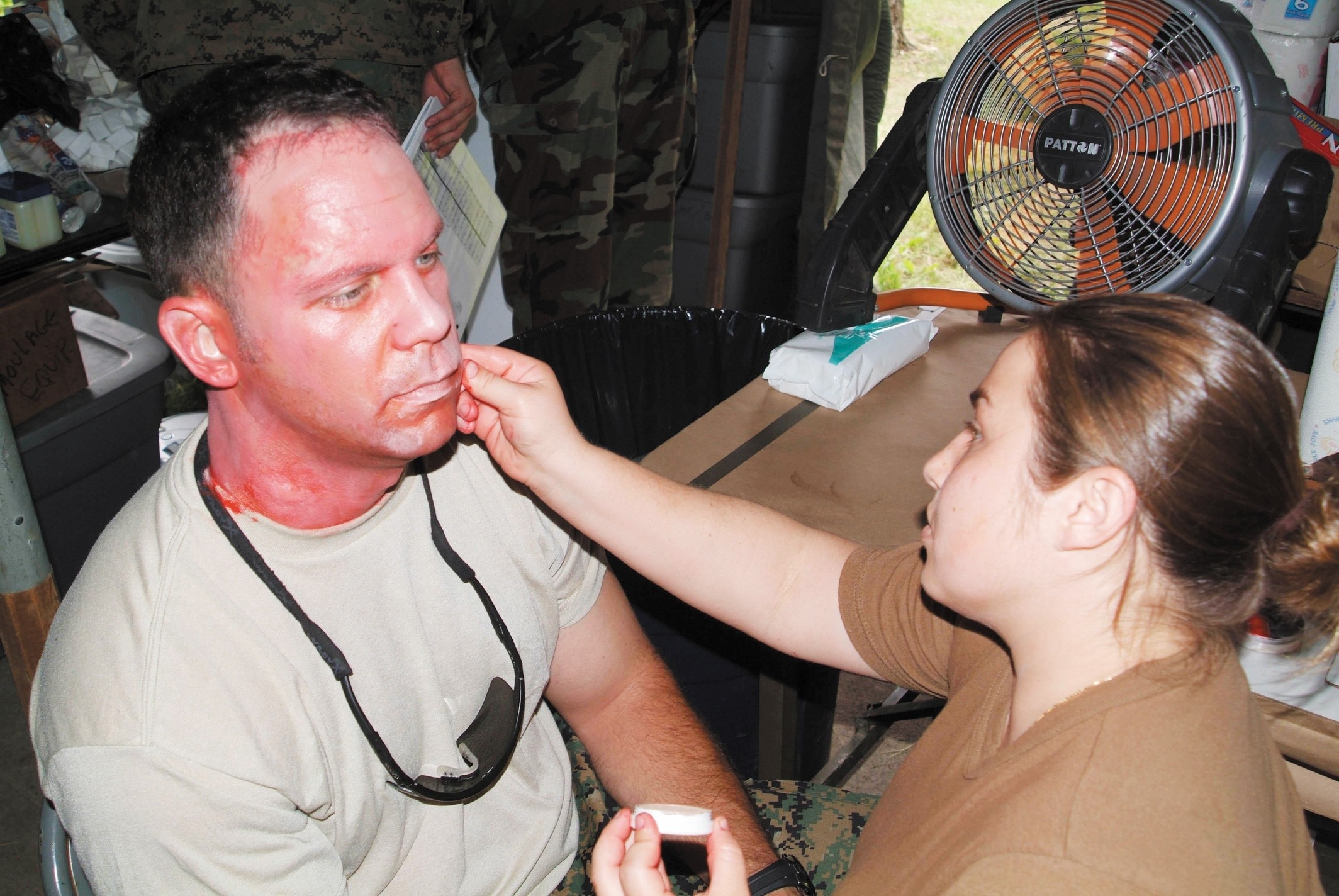In the wilds of Pennsylvania, platoons of men and women in sweat-stained uniforms and full mock gear traversed rugged terrain for two weeks in July, saving lives in makeshift combat hospitals and engaging in hand-to-hand combat between bites from their MRE rations.
These weren't platoons engaged in a domestic conflict but rather platoons of first-year medical students from the Uniformed Services University of the Health Sciences who were participating in the Operation Kerkesner education program and field training exercise July 13 through 25, at Fort Indiantown Gap, Pa.
The USU Department of Military and Emergency Medicine developed Operation Kerkesner as an education and training exercise to replicate the dangerous and adverse environments that medics face and subsequently overcome as they care for the wounded on the battlefield.
The newly improved Kerkesner training program was the brainchild of Air Force Maj. Glenn Burns, assistant professor, medical emergency medicine and officer-in-charge of Operation Kerkesner, who felt that first-year USU students needed an effective, interactive way to learn what it takes to be a military medic on the battlefield: bravery, intelligence and sheer instinct.
As a graduate of USU, Burns incorporated ideas from his experience during the training exercise.
"What we are trying to do is to give them the training now, so if the [hostile] situation ever presents itself, both as a doctor and officer, they know what to do," explained Burns. "They know these are human beings who need care, and they also know they need to protect themselves while providing that care."
Burns is a 2002 graduate of the USU School of Medicine who deployed with the Special Operations Command. His decorated military and medical background, in addition to the diverse backgrounds of other staff members, offered students the opportunity to train with instructors who have experienced battlefield medicine firsthand.
A few miles away from the Kerkesner training grounds, fourth-year medical students and graduate nursing students from USU trained at Operation Bushmaster, a similar program that provides emergency medical training necessary for combat, natural disaster and terrorist attacks. This type of medical training is unique to the military and plays a vital role in protecting the nation's safety.
"I hope [these students] go away with a better appreciation for what our enlisted Soldiers, Sailors and Airmen go through in the field," said Army Col. John M. Wempe, USU's brigade commander. "In addition to that, the leadership skills gained here are in context with the basic medical skills that a combat medic has to have. That's what I hope they take away from this."
For the two-week duration of Operation Kerkesner, tents lined with cots became homes for all participants. Luxuries like showers, air conditioning and walled rooms were replaced by dirt, trees and plenty of heat.
Each morning, the students were in formation with their assigned platoons, eager and a bit nervous to hear about the day ahead-on some days, activities ran as long as 18 hours.
Those activities included simulated event exercises, training to care for the wounded while under fire, chemical and biological threat training, evacuation and search-and-rescue exercises.
In one exercise, as students patrolled a path, a sudden explosion filled the air with thick, white smoke. Within seconds, instructors emerged and hastily placed plastic injury masks and afflicted body parts on a few students near the blast. As the remaining, "healthy" students tended to their injured colleagues, they came under enemy fire.
A combative session allowed students to spar against each another in self-defense training and learn how to use their equipment to defend themselves against the enemy.
Another exercise left students in the woods to locate two downed pilots and secure them to a helicopter landing zone while under constant enemy threat.
Team building and leadership were often themes of the Kerkesner sessions.
In one such exercise, students embarked on a three-hour land navigation assignment. Using only a compass, map and protractor, small teams had to find their way to particular locations and eventually arrive at a meeting spot.
"Being able to communicate and work with a team are the key aspects of this exercise," said Army 2nd Lt. Chris Brooks. "Having the opportunity to help out my buddies, and navigating my way through the terrain were the most interesting aspects of this training for me. This training is very important for all of our Soldiers, Sailors and Airmen."
Training in the natural setting challenged Kerkesner students to perform amid chilly winds and sporadic downpours, but they remained positive.
"If it ain't raining, we ain't training," chuckled Army 2nd Lt. Jeffrey Brown, who was drenched from the rain. "One of the reasons I chose USU over the HPSP [Health Professions Scholarship Program] scholarship was that if I was doing this career full out, I needed more background to it. And [Kerkesner] is helping meet that need."
Besides the dirty, rough and rugged exercises, Operation Kerkesner offered its fair share of educational, informative and interactive sessions focused on care for the wounded.
Students were trained to set up a battalion aid station quickly and accurately, even to the point that they were timed on quick and adequate tent preparation. And another session gave students a thorough lesson on the proper ways to examine a patient from head to toe and then administer intravenous fluids.
"They learn the fundamentals, and it's like riding a bicycle. It's one thing you never forget," said Navy Hospital Corpsman 2nd Class Careese Charles. "They have already received the information in the classroom, but it's about two instructors to twenty five students. Out here it is one-on-one training: one instructor, one student and one patient."
As friendships formed and new talents emerged, the students used the final day of Operation Kerkesner to band together, using brains and brawn to compete in a platoon showdown. Selecting members from each platoon to participate in the stretcher relay, IV set-up race, weapon assembly and disassembly race, combat bouts, and even a ration-eating contest, the students laughed and cheered each other on, as Operation Kerkesner officially came to a close.
USU hopes that students will take what they learn at Operation Kerkesner and Operation Bushmaster and apply those lessons when they prepare for the realities of war.
Air Force Col. Charles Beadling, vice chair and assistant professor, MEM, acknowledged that USU plays a major role in the quality of care and level of integrity among the medical students who will soon be responsible for making sure their fellow Soldiers, Sailors, Airmen and Marines make it back home.
"They leave knowing that when the time comes, they will be ready," Beadling said. "The graduates know that the men and women who sacrifice so much for our nation and for millions of people who they will never know, deserve the best possible care."






Social Sharing